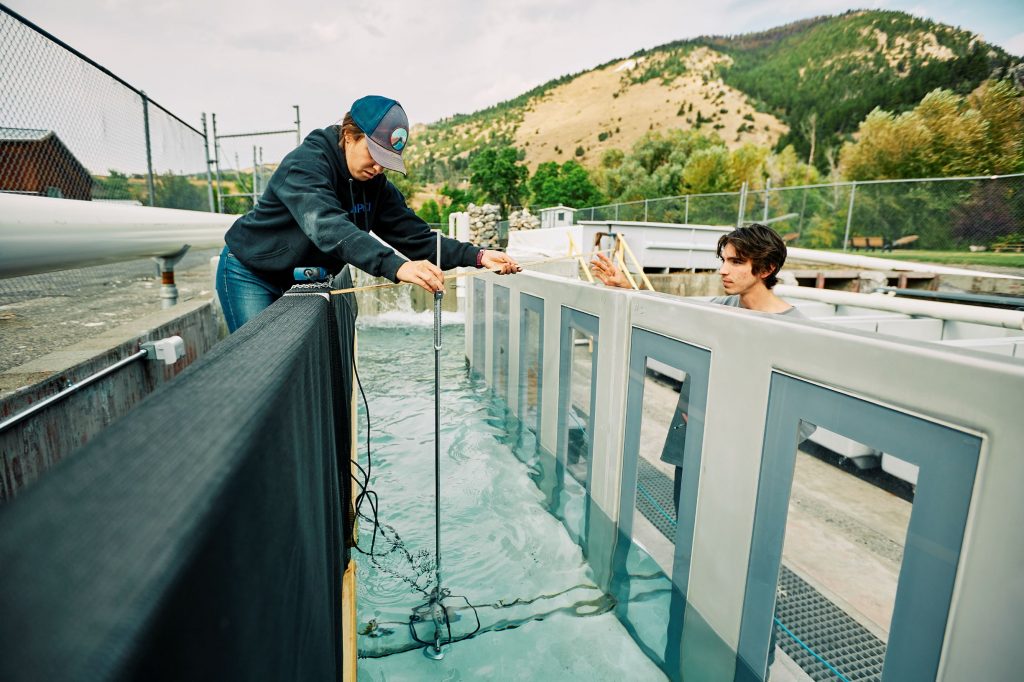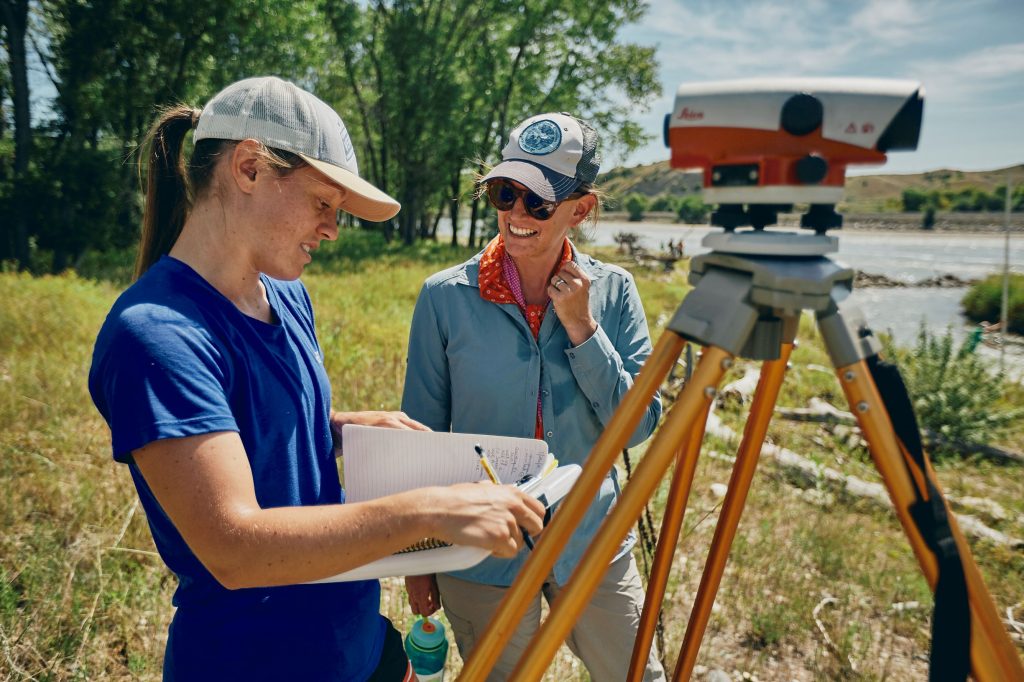New Facility Ready for Fish Passage Studies

Researchers in Montana have a new tool for designing fish passage structures that meet the needs of both fish and agricultural producers. A feature article by the MSU News Service highlights a recently completed artificial waterway at the U.S. Fish and Wildlife Service’s Fish Technology Center on the outskirts of Bozeman, which researchers can use […]
MSU News Highlights Fish Passage Research on Yellowstone River

Graduate students at Montana State University had a great opportunity to participate in aquatics field research this summer, which was captured in feature article by the Montana State University (MSU) News Service. “MSU engineers, ecologists seek to improve fish passage on Yellowstone River” profiles grad students Haley Tupin and Ian Anderson, who gathered data at […]
USFWS Sponsors New Phase of Fish Passage Research
WTI, the MSU College of Engineering, and the Bozeman Fish Technology Center (BFTC) will continue their partnership with the U.S. Fish and Wildlife Service to study fish passage and the barriers that limit fish movements. Under a 5-year cooperative agreement, USFWS will sponsor a new phase of fish passage research projects, using the open channel […]
New Publication: Arctic Grayling Research featured in Journal of Ecohydraulics
Installing effective fish passage structures that provide connectivity for Arctic grayling is a promising conservation strategy for imperiled populations. The Journal of Ecohydraulics has published a study by Road Ecology researcher Matt Blank and several colleagues, which examined the swimming behavior of grayling from Montana in an open-channel flume. The results “provide some of the […]
New Publication: Testing the swimming capabilities of Arctic Grayling
Northwest Science has published the journal article “Swimming Capabilities of Artic Grayling.” The article, authored by Joel Cahoon, Audrey Jones, and Kathryn Plymesser of MSU’s Civil Engineering Department; Kevin Kappenman and Erin Ryan of the US Fish and Wildlife Service; and Matt Blank of WTI highlights research to study the swimming ability of arctic grayling […]
Just Keep Swimming: Sturgeon Swimming Research Published in Northwest Science
A team of Montana-based fish passage researchers continue to produce notable results using the outdoor experimental flume at the Bozeman Fish Technology Center. Northwest Science has published the journal article “Sprint Swimming Performance of Shovelnose Sturgeon in an Open-Channel Flume.” The article, authored by Luke Holmquist of MSU’s Department of Ecology, Kevin Kappenman of the […]
